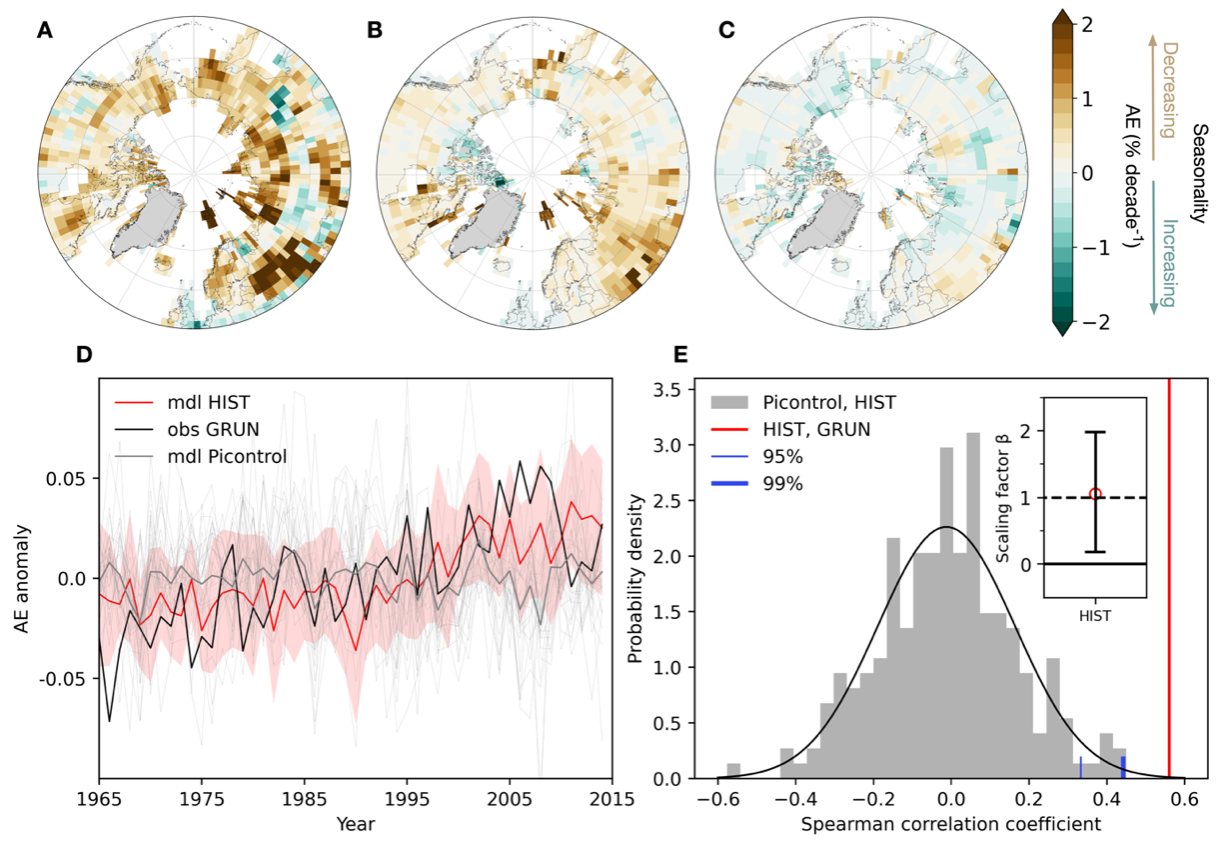Riverine ecosystems have adapted to natural discharge variations across seasons. However, evidence suggesting that climate change has already impacted magnitudes of river flow seasonality is limited to local studies, mainly focusing on changes of mean or extreme flows. An international research team of researchers, led by Prof. Junguo Liu from North China University of Water Resources and Electric Power, set out to investigate what is anthropogenic climate change doing to these seasonal cycles. The study was made available on March 1, 2024 published in Volume 383 of Science.
Based on in situ observations of monthly average river flow from 10,120 gauging stations from 1965 to 2014, the team introduced the use of apportionment entropy as a robust measure to assess flow volume non-uniformity across seasons, enabling a global analysis. Results showed ~21% of long-term river gauging stations (2134 hydrological stations) exhibited significant alterations in seasonal flow distributions, and the seasonality of river runoff decreased significantly in the high latitudes of the Northern Hemisphere (above 50°N). The number of stations with a significant seasonal trend was comparable to the number of stations with a significant annual trend, but about two-thirds of the stations did not change significantly in annual runoff, indicating that the seasonal change of global runoff was mainly manifested in the intra-year redistribution of runoff.
Fig. 1: River flow seasonality (RFS) trends represented by apportionment entropy (AE) (% decade-1) over 50 years (1965–2014)
By combining a data-driven runoff reconstruction with state-of-the-art hydrological simulations, the team conducted climate change detection and attribution analyses of the river flow seasonality using the correlation-based method and the optimal fingerprinting approach. They identified a discernible weakening of river flow seasonality in northern high latitudes (above 50°N), a phenomenon directly linked to anthropogenic climate forcing. Possible mechanisms that might drive flow regime dampening above 50°N under anthropogenic climate change include early snowpack depletion, loss of glacier extent, permafrost loss, increasing proportion of precipitation as rainfall, and shorter freezing periods interacting with ocean–atmosphere oscillations. Depending on the region, some of these drivers can be more important than others in explaining river flow seasonality changes. This study provides a standpoint for understanding changing seasonal patterns of river flow. Greater urgency is required in undertaking climate adaptations to ensure that freshwater ecosystems maintain essential functions (i.e., through use of managed environmental flows) as well as securing sustainable water resource by identifying the risks of flood and drought, seasonal storage opportunities, and allocations for irrigation or hydropower generation.

Fig. 2: Comparison of apportionment entropy (AE) trends from observation-based reconstructions and global hydrological models for 1965-2014 (% decade-1) in the northern high latitudes (above 50°N).
This study has been supported by the Strategic Priority Research Program of the Chinese Academy of Sciences (grant no. XDA20060402), the National Natural Science Foundation of China (grant no. 41625001), the Henan Provincial Key Laboratory of Hydrosphere and Watershed Water Security, and funding from the School of Geography and water@leeds at the University of Leeds. The original article link:
https://doi.org/10.1126/science.adi9501


